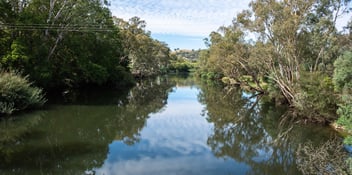New management plan to support Murray–Darling wetland sites
While the recent increase in wet conditions brings some relief to habitats throughout the Murray–Darling Basin, environmental water releases over the next 12 months will focus on continuing to support "thirsty" wetland sites to support waterway health.
The Commonwealth Environmental Water Office has released the 2021-22 Water Management Plan, which has been developed under water-use scenarios for very dry to very wet conditions, and is designed to be adapted under eventuating patterns.
The plan was developed in partnership with local communities, First Nations, scientists and water managers to prioritise sites in the upper and lower Murray-Darling Basin and plan where water for the environment will be best delivered.
Interim Commonwealth Environmental Water Holder Hilton Taylor said local people know their rivers best and consulting with communities helped identify sites in need of flow support.
“Local knowledge is key to getting the best possible results for the environment and communities,” Taylor said.
“Even with the recent wet conditions, water for the environment still plays an important role in helping to keep rivers and wetlands healthy in the Murray-Darling Basin.”
Extending flow to where it's needed
Many of the floodplain wetlands in the southern basin have not received water for several years, but the 2021-22 Water Management Plan has a strong focus on some key wetland areas in need of higher flows.
These include the mid-Murrumbidgee wetlands, the NSW Central Murray Forests, Hattah-Kulkyne Lakes, and the floodplains at Chowilla, Pike and Katarapko in South Australia.
“If the wet continues, we will look to capitalise on opportunities to extend the duration of flows into important wetlands to benefit wetland plants and support waterbird breeding,” Taylor said.
However, in the northern basin, the severity of the recent drought means the recovery of some river ecosystems will take time and require significant flows.
“The wetter conditions present both opportunities and risks,” Taylor said.
“We will avoid delivering water where it will exacerbate third-party impacts from any flooding. We are also prepared to help mitigate risks, such as providing refuge habitat for wildlife if natural flooding results in low-oxygen blackwater events.”
Water for the environment allocations will also continue to support the recovery of native fish populations and support the internationally recognised Macquarie Marshes, Gwydir Wetlands and Narran Lakes.
Take a look at the 2021-22 Water Management Plan here.

